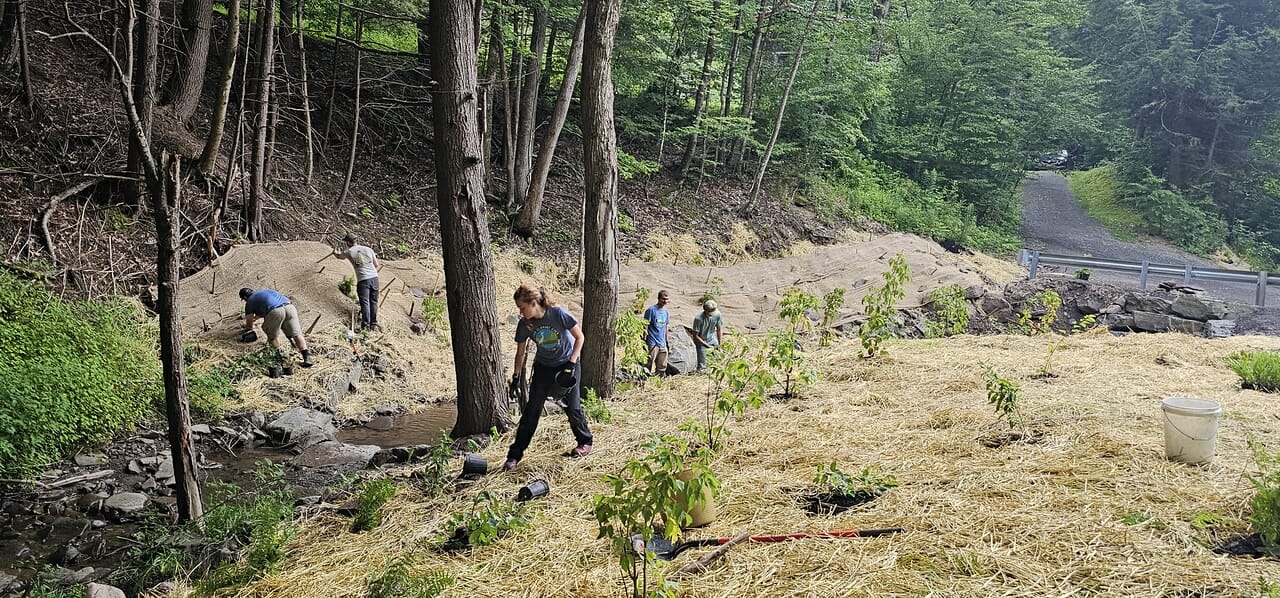On a recent early fall day, Tracy Brown and Jesse Vadala connected to reflect on what had been an extremely busy several months for them and the rest of TU’s Northeast Coldwater Habitat Program.
“It can be a bit of a slog,” Brown said of TU’s field season, which generally wraps up in October for staff working in northern climates. “It can be easy to get caught up in the day-to-day work and not really think about the big picture impact.”
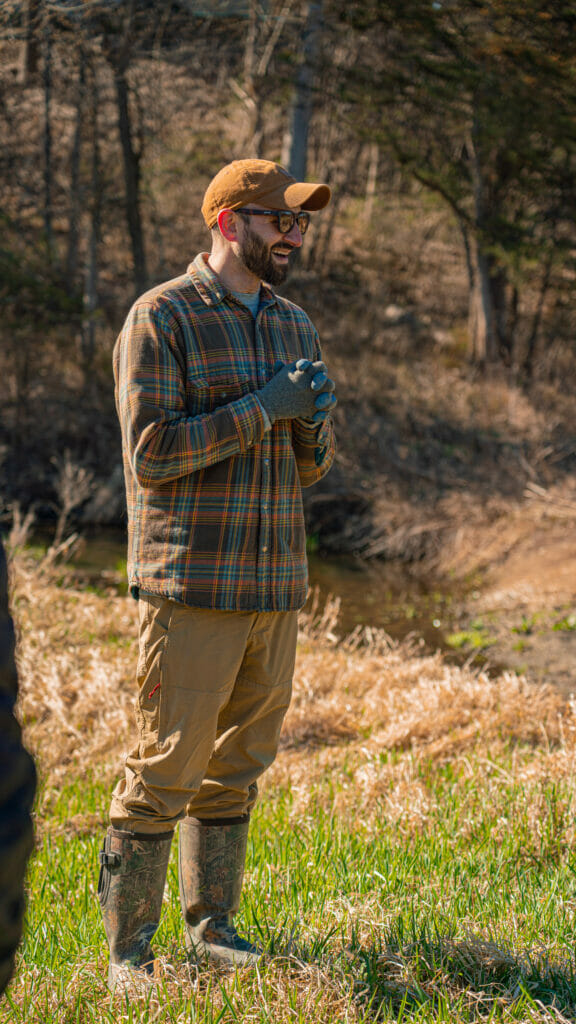
As they compiled their impressive accomplishment statistics, Brown suddenly thought of a fun name for the team of TU and partners that has been working in New York.
“We’re the Barrier Busters!” said a laughing Brown, who manages TU’s restoration work in New York and Connecticut. “I know it’s corny. But it’s accurate.”
The numbers bear her out.

In the past few years New York’s Barrier Busters have replaced 23 barriers, reconnecting nearly 23 miles of stream habitat. The team tackled 10 projects in 2023 alone. Next year? Eight projects will reconnect an additional 18 stream miles.
“That is a lot of miles of mostly headwaters streams that support native brook trout,” Brown said. “And the entire team is crucial to making this happen.”
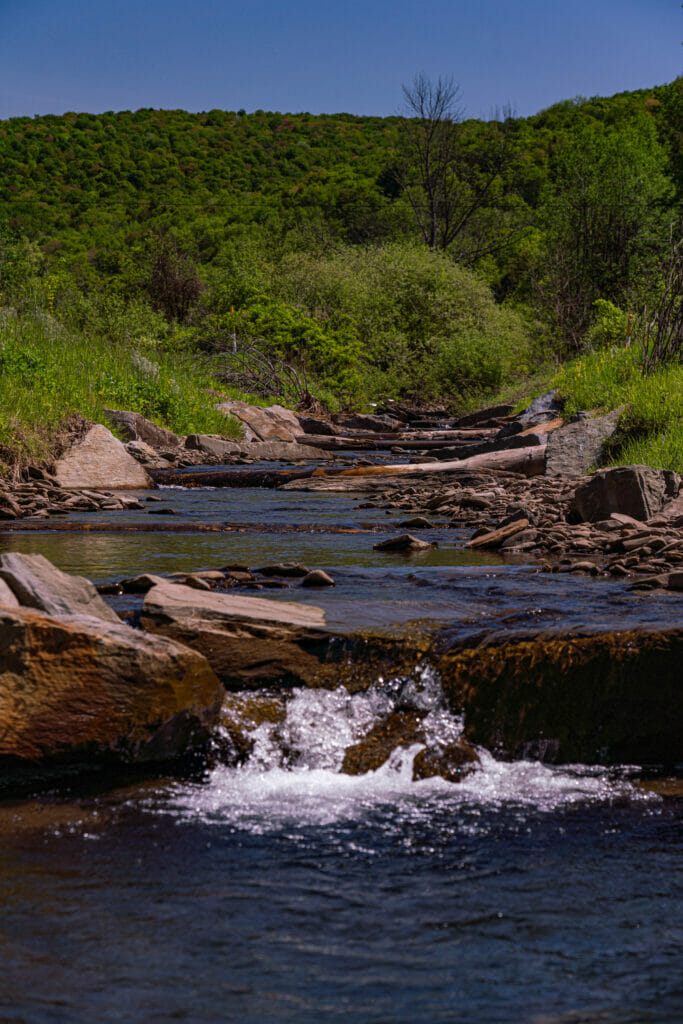
A long process
The first miles in the process are on the road. Long before crews start the heavy lifting of removing barriers — mostly culverts — survey crews fan out across the landscape to access road-stream crossing.
“I don’t know the exact number of culverts we have collectively assessed at this point, but it is in the many thousands,” Brown said.
Where roads cross streams, there must be infrastructure in place to get vehicles over the water. For larger streams, those are bridges. For smaller streams, culverts have long been the tool for getting stream flows under roads.
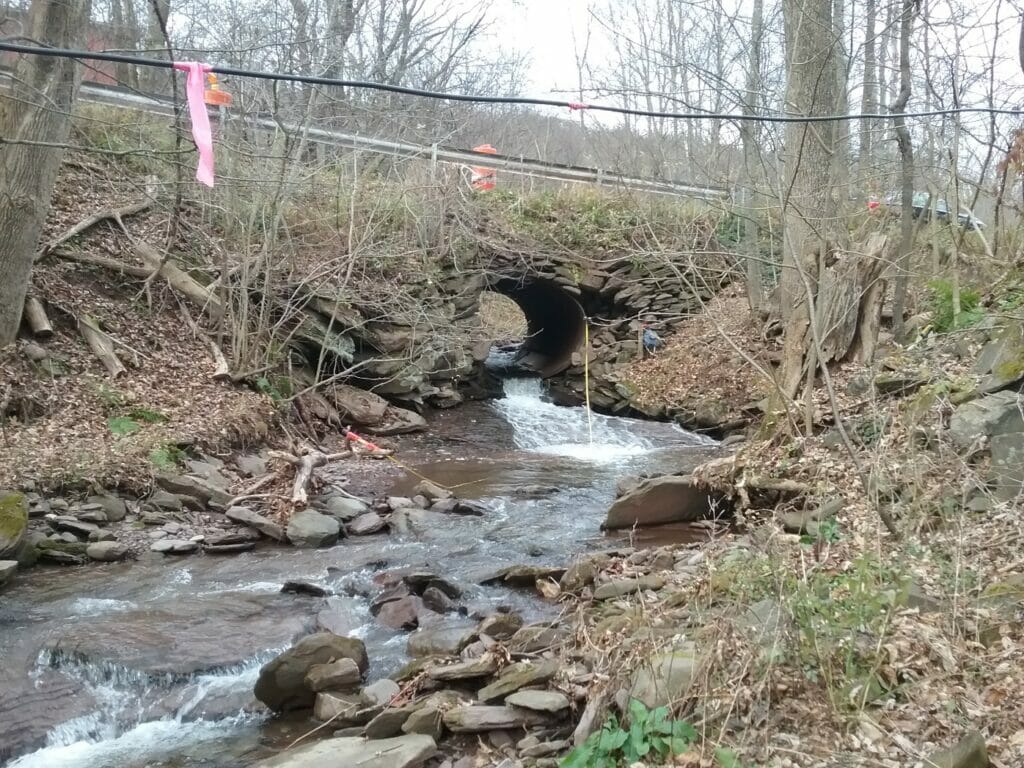
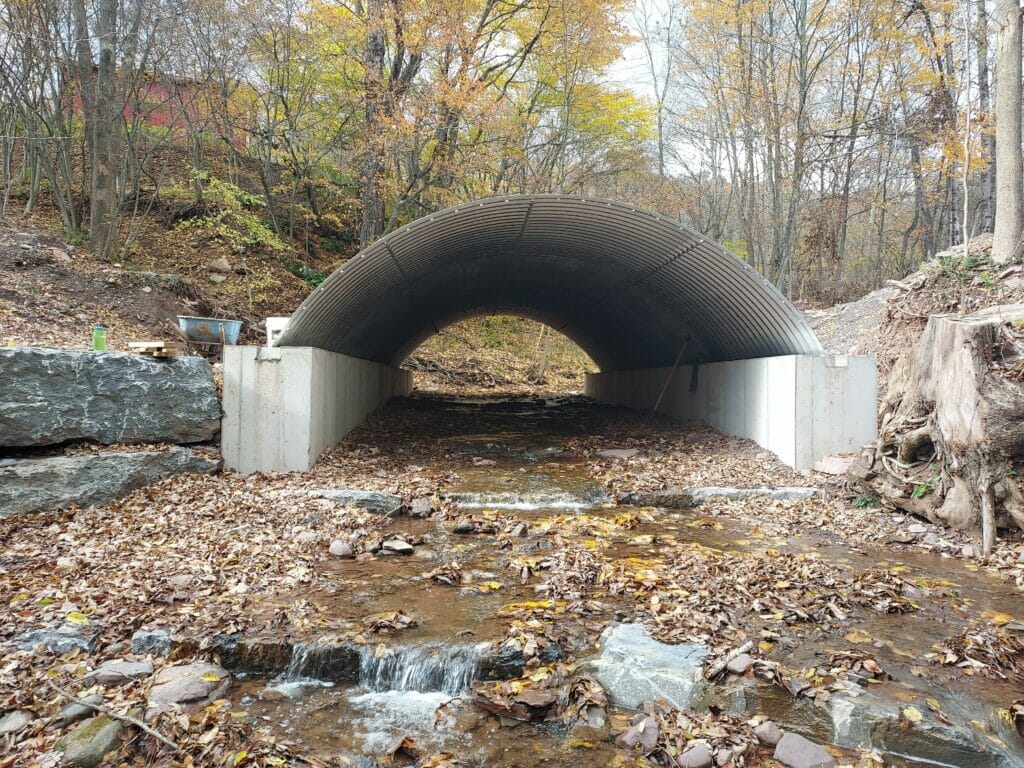
Unfortunately, those culverts are often too small to adequately pass heavier flows, which can result in road-damaging floods. With the changing climate contributing to more severe and more frequent rain events, flooding has become an even more serious problem.
Even if a culvert is adequately sized to handle high water, water pouring from the downstream end of the pipe often carves out a pool below it. Even if the drop from the outflow is small, it can block fish and other stream dwellers from moving upstream.
Assessing the crossings is not as simple as just looking at it, though it often takes just a glance to know that a culvert is a barrier.
Survey crews take detailed measurements of the crossing, including pipe length and diameter and difference between the stream’s elevation above and below the culvert. The size of the watershed above the barrier is also considered, with modeling helping to predict maximum expected flows.
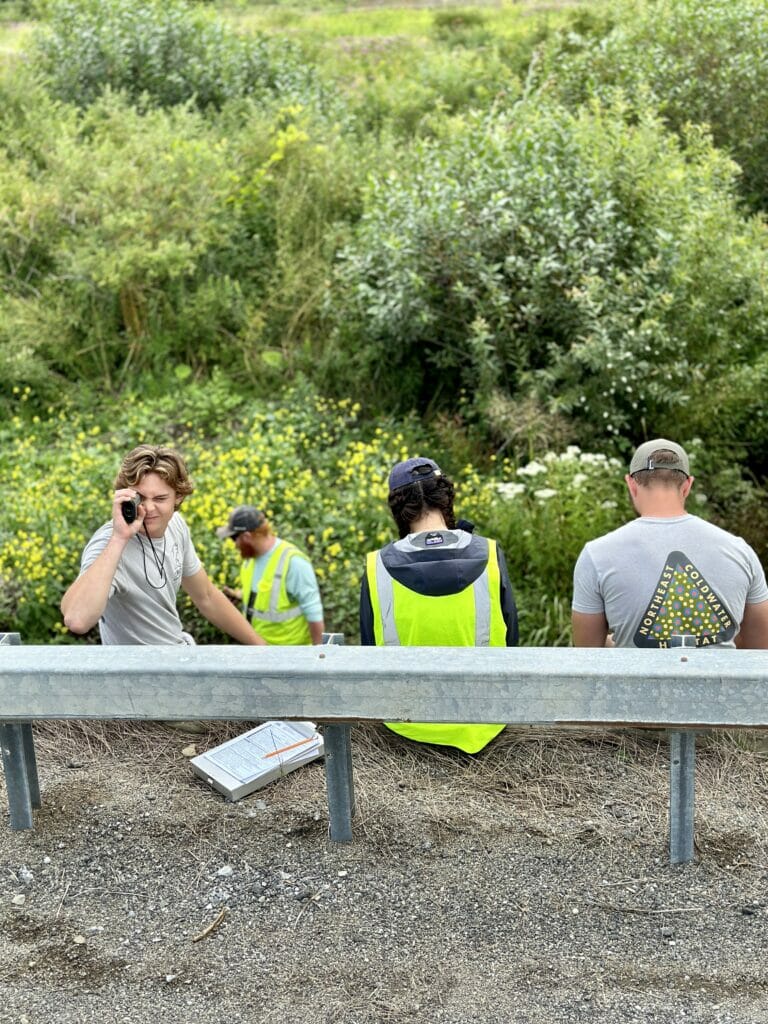
Those data are eventually reconciled with other information, including the stream’s fish population and overall health, to help prioritize sites where replacing the barrier will provide the most bang for the buck. Tools such as TU’s Brook Trout Conservation Portfolio, as well as TU’s new Priority Waters initiative, help inform prioritization decisions.
Money matters
As TU’s engagement manager for New York, Vadala works with TU members and supporters on a diverse array of on-the-ground efforts.
“Partnership development and community engagement is a key component of much of TU’s work,” Vadala said. “We partner with the Fish and Wildife Service, DEC and local conservation groups to identify, design and implement these projects. We often need to engage with private landowners as well, but the reality is that when you’re talking about these large barrier-removal efforts, we need funding to make the work happen.”
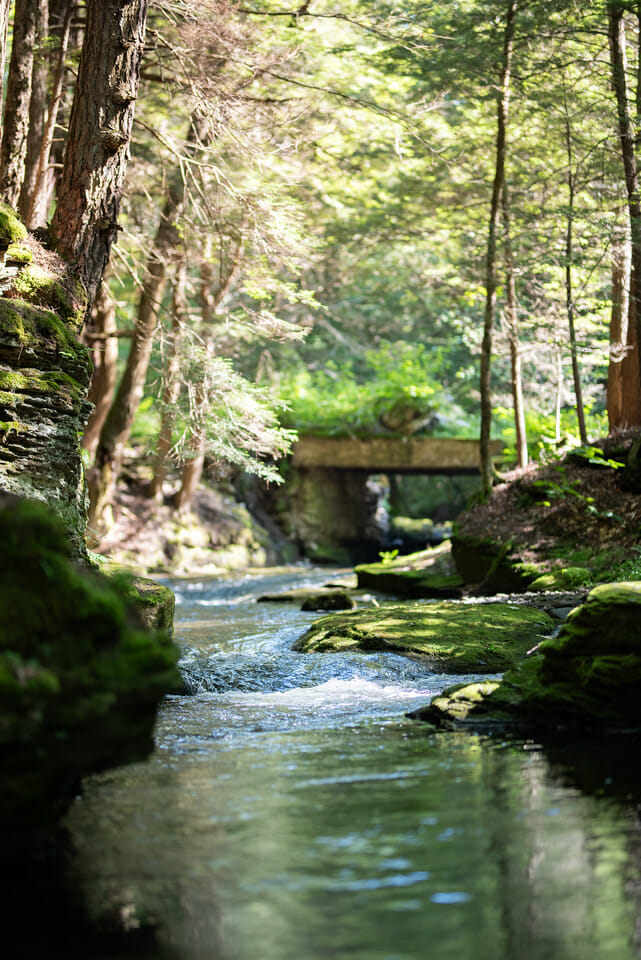
Recently, Brown breathed a sigh of relief when she wrapped up the final of three major grant applications for proposed work in the Saranac, Taghkanic and Batavia Kill watersheds.
“Field work is fun and, of course, immensely satisfying,” Brown said. “But we can’t get out there without doing the hard work of identifying funding sources and, hopefully, obtaining that funding.”
Funding comes from many sources, including grants from state and federal agencies such as the U.S. Fish and Wildlife Service, and from partnering with local municipalities to secure required local contributions. The New York State Department of Environmental Conservation Aquatic Connectivity Restoration Grant program is an important annual fund that supports barrier removals to help complete many of our projects.
Costs vary depending upon the scope of the projects but typically range from about $180,000 to as much as $350,000.
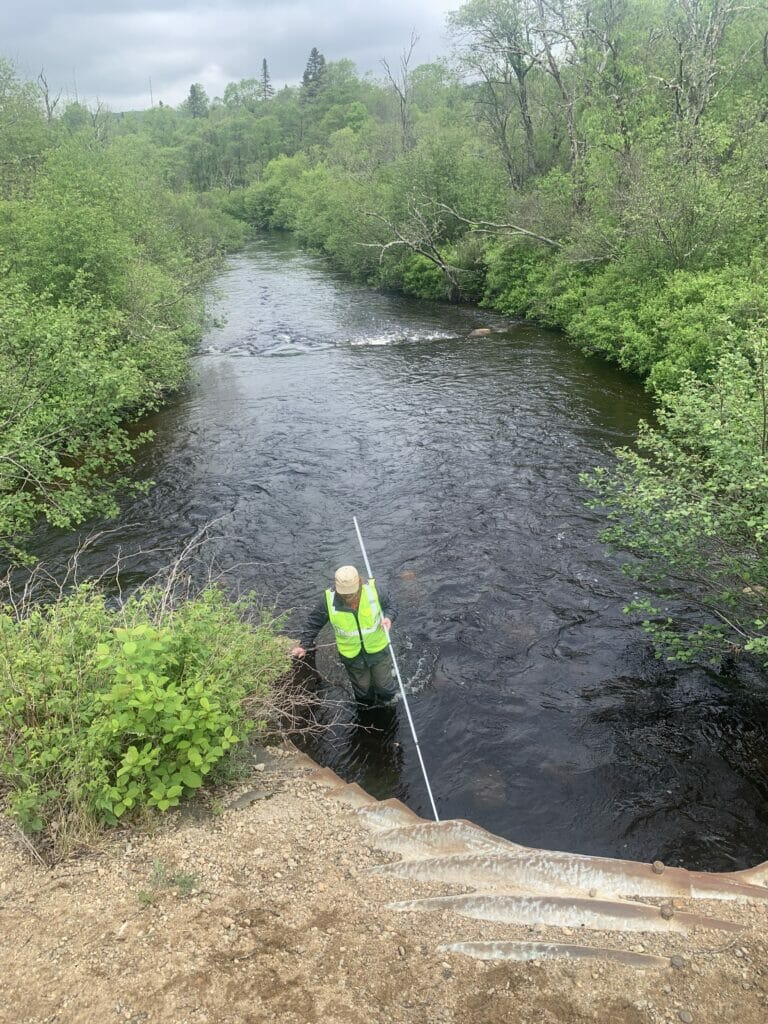
Securing funding, developing plans with stream and restoration engineers, and then obtaining necessary permits is time-consuming, and it can take a year — and sometimes much longer — from the time a project is initiated to when crews start moving dirt.
“Even as we were managing projects this year, we were also working ahead,” Brown said. “We have already secured funding for eight projects next year that will reconnect nearly 20 more miles of stream habitat. And we have filed five additional applications for other projects.”
A project in the summer of 2022 on Kidd Brook in Delhi, N.Y., perfectly encapsulates the process.
A culvert where Webster Brook Road crossed the stream — a tributary to the West Branch of the Delaware River — was identified as a barrier. Additionally, the officials with the Town of Delhi had expressed a priority interest in completing the project as it was identified as a failing structure.
After obtaining funding from NFWF’s Delaware River Conservation Fund, TU worked with highway department officials from Delhi, the U.S. Fish and Wildlife Service, DEC, and the Delaware County Soil and Water Conservation District on the construction, which reconnected the lower stream with 2 miles of stream above the barrier.
Steve Swenson, senior ecologist for DEC’s Region 4, said surveys have shown that the $156,000 project is already having an impact on the stream’s trout population.
“This project not only involved the removal and replacement of an antiquated, undersized and low-quality structure but also resulted in the creation of a thriving trout fishery,” Swenson said. “Prior to the intervention, the upstream area around the old culvert lacked any trout. Both upstream and within the crossing it was entirely devoid of aquatic life.
“However, after the old culvert was removed and the new one installed, both brook and brown trout are now flourishing, repopulating the waterway both upstream and within the confines of the new culvert.”
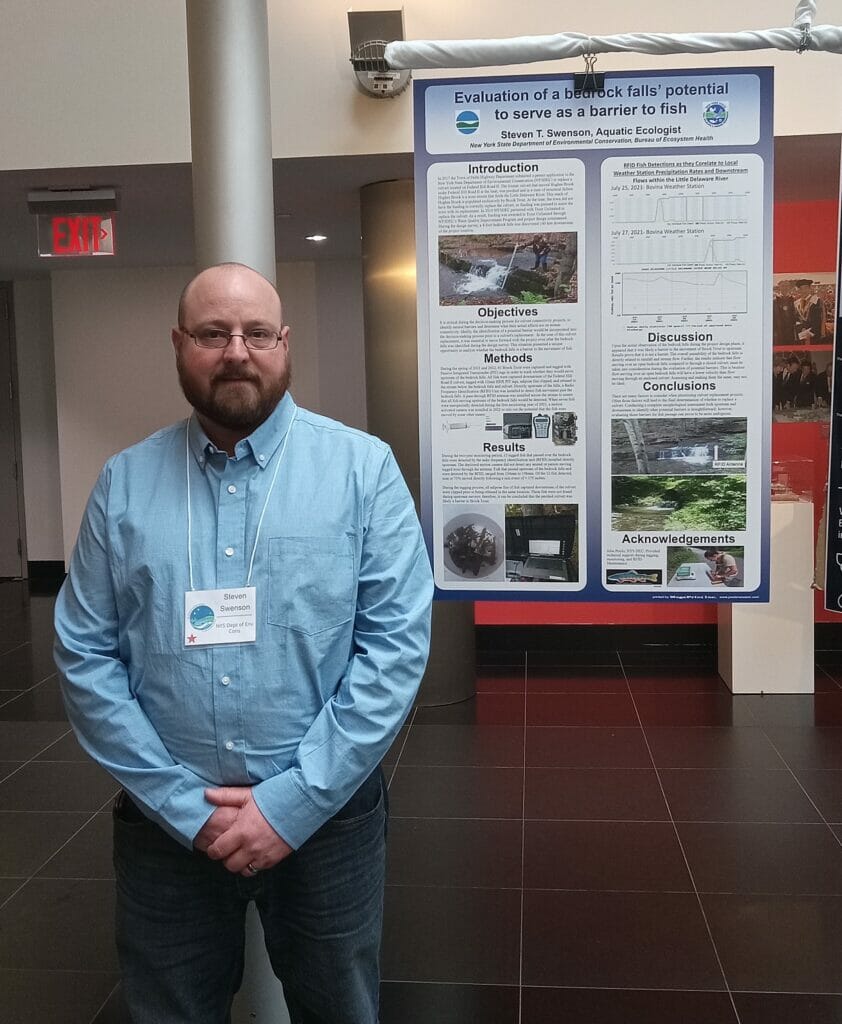
It’s a story that has been repeated often in recent years, and one that will become even more common in the years ahead.
“We wish we could just wave a magic wand to fix these barriers,” Brown said. “It takes time, money and effort. We are fortunate to have so many partners that are as passionate about this as we are, and it’s making a difference that is more profound by the year.”



